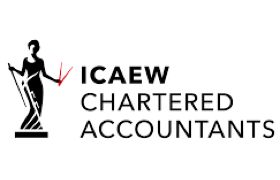Is Your Farm Vehicle a Car or Van for Tax Purposes?
- 3rd July 2025
Understanding whether a vehicle counts as a car or a van is more than a technicality. For farmers, it can have a direct impact on tax bills, Capital Allowances and how much VAT can be reclaimed. Some of the rules changed with effect from April 2025, particularly for double cab pickups, so now is the time to get to grips with the details.
What Makes the Difference
Many vehicles used on farms fall into a grey area. They may carry both tools and passengers, have multiple seats and windows, and serve several roles in day-to-day operations. However, tax law doesn’t look at how you use the vehicle but how it is built and what it is suited to do.
For a vehicle to be treated as a van for Benefit in Kind and Capital Allowance purposes, it must be constructed primarily for carrying goods. If it is just as suited to carrying passengers as it is to hauling a load, HMRC is likely to treat it as a car. This is particularly relevant for vehicles like double cab pickups which offer both passenger space and a loading area.
Why the April 2025 Changes Matter
Until recently, HMRC allowed double cab pickups to be treated in line with VAT rules (see below) meaning many were classed as vans for tax purposes. That approach has changed. From April 2025, new vehicles acquired need to be reviewed on a case-by-case basis, and most will be treated as cars for calculating Benefit in Kind. This could lead to higher tax charges for employees and reduced tax efficiency for the business.
For example, a pickup used around the farm that has rear windows and removeable seats may well be classed as a car, even if it’s towing equipment or filled with tools most days. The key point is whether it was built primarily to carry goods, not whether it’s doing so now.
What This Means for Capital Allowances
If your vehicle is classed as a van, you may be able to claim the full cost under the Annual Investment Allowance, which is often the best outcome. However, if it’s classed as a car, it will usually go into a pool and be written down at a much slower rate, currently just 6% annually for most vehicles.
That slower rate could mean less relief in the short term, and more complexity in your accounts, particularly if the vehicle is also available for private use.
How VAT is Treated Differently
VAT rules include a specific clause which prevents a vehicle with a payload of one tonne or more from being treated as a car. Most double cab pickups do still meet the one-tonne test and are therefore not classed as cars for VAT purposes, meaning businesses can generally reclaim the VAT on purchase.
However, it’s important to remember that HMRC’s rules are strict where any private use is involved. If the vehicle is available for any non-business use, VAT may not be recoverable unless very strict conditions are met. This includes keeping the vehicle on-site, recording mileage and ensuring it is never used for personal trips.
What Should Farmers Do Now
Take a moment to review the vehicles used in your farming business, especially if you provide them to employees. Make a note of the vehicle specifications - how many seats it has, what modifications have been made, and what the manufacturer says about its use.
The April 2025 changes may mean vehicles you’ve always treated as vans for tax purposes will now fall under the car rules. That could increase the Benefit in Kind charge and limit the relief you can claim. These changes could affect cashflow, tax planning and even the types of vehicles you choose to invest in.
If you're unsure, your accountant will be able to help by reviewing the details and advising on the best course of action. As always, the earlier you review your position, the more time you have to plan ahead.
All data and figures referred to in our news section are correct at the date of publishing and should not be relied upon as still current.



